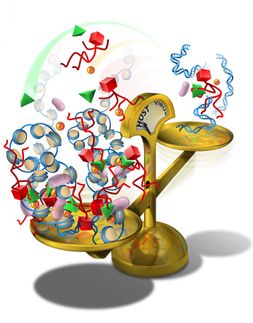Researchers find new way to study how enzymes repair DNA damage
Advertisement
Researchers at Ohio State University have found a new way to study how enzymes move as they repair DNA sun damage - and that discovery could one day lead to new therapies for healing sunburned skin. Ultraviolet (UV) light damages skin by causing chemical bonds to form in the wrong places along the DNA molecules in our cells. Normally, other, even smaller molecules called photolyases heal the damage. Sunburn happens when the DNA is too damaged to repair, and cells die.
Photolyases have always been hard to study, in part because they work in tiny fractions of a second. In Proceedings of the National Academy of Sciences, Ohio State physicist and chemist Dongping Zhong and his colleagues describe how they used ultra-fast pulses of laser light to spy on a photolyase while it was healing a strand of DNA.
This is the first time that anyone has observed this enzyme motion without first attaching a fluorescent molecule to the photolyase, which disturbs its movements. They were able to see the enzyme's motion to help the healing process as it happens in nature.
"Now that we have accurately mapped the motions of a photolyase at the site of DNA repair, we can much better understand DNA repair at the atomic scale, and we can reveal the entire repair process with unprecedented detail," said Zhong, the Robert Smith Associate Professor of Physics, and associate professor in the departments of chemistry and biochemistry at Ohio State.
Such small motions are very hard to study. Typically, researchers deal with the problem by attaching tiny bits of fluorescent molecules to the enzymes they are trying to study. But adding an extra molecule to an enzyme such as photolyase could change how it moves. So instead of using tags, he and his team took laser "snapshots" of a single photolyase in action in the laboratory. They mapped the shape and position of the photolyase molecule as it broke up the harmful chemical bonds in DNA caused by UV light. The whole reaction lasted only a few billionths of a second.
In nature, DNA avoids damage by converting UV rays into heat. Sunscreen lotions protect us by reflecting sunlight away from the skin, and also by dissipating UV as heat.
Sunburn happens when the DNA absorbs the UV energy instead of converting it to heat. This is due in part to the random position of the DNA molecule within our cells when the UV hits it. When the UV energy is absorbed, it triggers chemical reactions that form lesions - errant chemical bonds - along the DNA strand. If photolyases are unable to completely repair the lesions, the DNA can't replicate properly. Badly damaged cells simply die — that's what gives sunburn its sting. Scientists also believe that chronic sun damage creates mutations that lead to diseases such as skin cancer.



























































